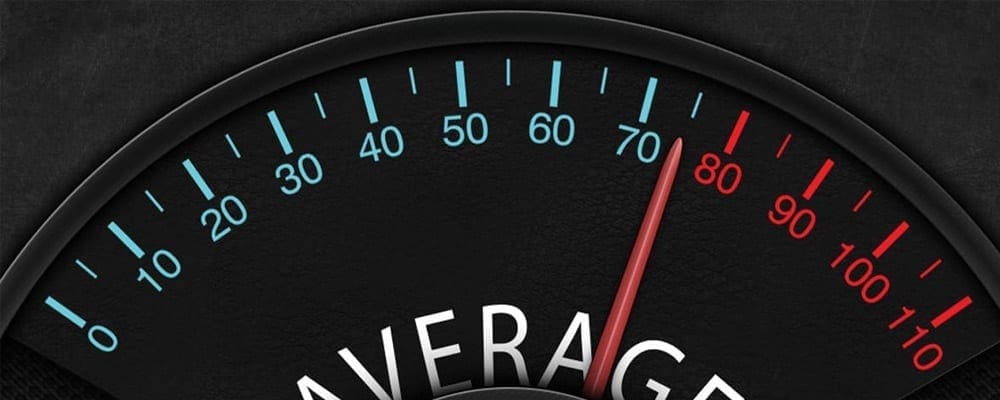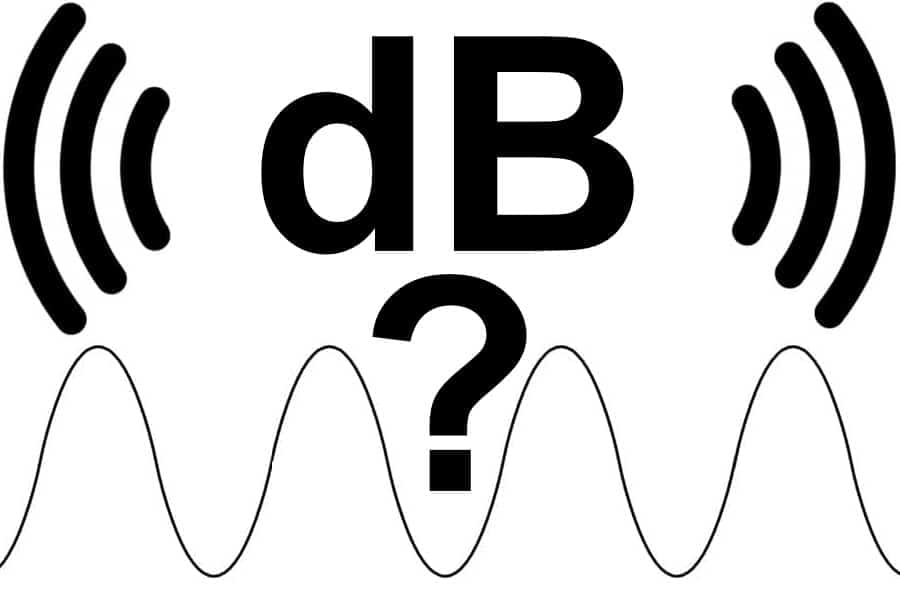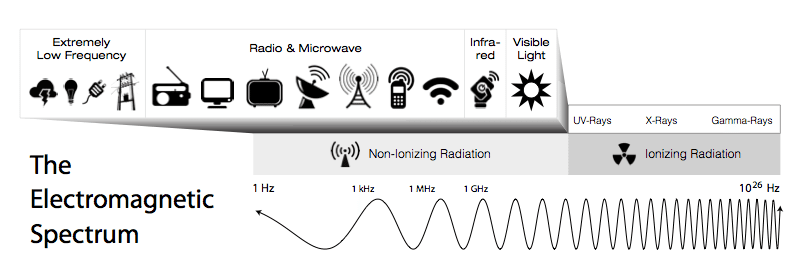EMF shieldingEMF shielding refers to the practice of reducing the electromagnetic field (EMF) exposure in a particular area by blocking or altering the electromagnetic waves with barriers made of conductive or... products can help protect you from EMF radiation"Radiation" in the context of Electromagnetic Fields (EMF) refers to the process by which energy is emitted and transmitted through space or a material medium in the form of electromagnetic.... But how can you be sure they work? Since most lab test reports use decibels to report values, interpreting them can be confusing at first.
In this post, I’ll explain what decibels are and how they’re used to measure EMF shielding.
The Importance of Decibel
The decibel (dB) is a logarithmic unit that scientists use to measure a range of things, including sound levels, electronics, and signals.
With the growth of modern technology, our daily EMF exposure has increased exponentially. Today, the level of EMF pollution in our environment is significantly more than what it was a mere three decades ago. And because of this, a large number of the population suffer from severe physical and mental health problems.
One way to avoid EMF’s ill effects is to use EMF shielding products to shield your body from EMF radiation coming toward you.
But how do you find the right product?

Want to Slash Your EMF Health Risks?
Want to Slash Your EMF Health Risks?
Good! Learn the one small change you should make right now.
Well, you can always buy one first and check if it works with the help of an EMF meter. But, in the long run, that becomes unnecessarily expensive and time-consuming. So, we lean toward another method of knowing if an EMF shielding product works. And that’s by looking at the laboratory test reports of that product.
Virtually all legitimate EMF shielding product companies disclose the lab test reports of their products on their websites. And you can simply check those reports out to see if their products are effective.
But the problem is that most of these test reports use a unit of measurement called a decibel to report values. And because of that, most people have a hard time understanding them, as “decibel” isn’t a word we use in our daily lives.
That’s why I’m writing this post to explain decibels in-depth, so your EMF shielding journey can be as easy as possible. So, let’s begin.
A Short Intro to EMF
Before discussing decibels, let’s take a moment to understand EMF, why we shield it, and how EMF shielding products work.
EMF stands for electromagnetic field—a type of energy"Energy" is a fundamental concept in physics, often described as the ability to do work or cause change. In everyday terms, it's what is needed to move things, heat them... that exists around us in various forms. Some EMFs are natural, like sunlight, and others are artificial, like X-Rays and microwaves.
Our devices like cell phones, laptops, and tablets are also major EMF sources. These devices use EMF to wirelessly connect to the network or communicate with each other.
I have written a separate post explaining EMF in simple words. So give it a read.
Now, since EMF is all around us, we get exposed to it every day. And that’s not good, as research studies say that EMF causes many biological effects that severely deteriorate your physical and mental health.
To avoid this, companies like mine (Shield Your Body) manufacture EMF shielding products that help you protect yourself and your loved ones against EMF’s ill effects.
But how does EMF shielding work?
The Science Behind EMF Shielding
In 1836, an English scientist named Michael FaradayMichael Faraday: Pioneer of Electromagnetism and the Faraday Cage Michael Faraday, born on September 22, 1791, in Newington Butts, Surrey, England, was a brilliant scientist and experimentalist who made groundbreaking... conducted an experiment to find out if there was any way we could shield electricity to protect sensitive equipment from getting damaged.
This experiment was a continuation of one that Benjamin Franklin, one of the founding fathers of the US, started. The only difference was that Franklin’s ambition wasn’t to shield electricity but rather to understand the attractive force of electricity.
In Franklin’s experiment, a dielectric cork attached to a silk thread was lowered into a metal can. Franklin then electrified the can from the outside. The hypothesis was that once he electrified the can, the dielectric cork would get attracted to the walls of the can.
But to his surprise, the cork remained unmoved. This phenomenon remained a mystery until eighty-one years later, when Michael Faraday continued the experiment. This time, in a slightly different way.
Faraday built a 12-foot box using a wooden frame with paper walls and metal wire mesh. He went inside the box and electrified it from the outside.
After spending two whole days in that box, he came out unharmed.
His experiment solved what Benjamin Franklin didn’t and showed the world that conductive materials like metals shield electricity.
His experiment is today known as the Faraday Cage, and this concept is widely used to protect sensitive equipment from electrical damage.
Now, since EMF is also a product of electricity, we can create effective EMF shielding products using conductive materials like silver and copper. And we know it works because we can actually put it to the test to verify its effectiveness.Visit my post “EMF Shielding Materials” to learn more about how EMF shielding products work.
EMF Testing
There are two ways you can test if an EMF shielding product is effective: using a laboratory test, and using a consumer-grade EMF meter at home. The only difference is that laboratory tests are significantly more accurate than those done at home.
This doesn’t mean that consumer-grade EMF meters can’t show you if a product is effective. They can. The results just won’t be as accurate as the lab test.
Download my EMF testing guidebook to learn more about testing your EMF shielding products using an EMF meter at home.
Laboratory test reports help you understand if a product is effective, even before buying the product. And once you buy it, you can again verify it for yourself to ensure that it works properly.
As I already mentioned, most lab test reports use decibels to report shielding effectiveness. So, let’s go ahead and take a look at how you can understand EMF shielding reports that use decibels to showcase the results.
Decibels, a Perfect Unit for Measuring EMF Shielding
You may have heard people reference decibels when discussing the “loudness” of sound. But decibels don’t just measure sound. They’re used in all branches of engineering to measure a series of physical properties with varying intensities.
The decibel is also one of the most important units of measurement when analyzing EMF attenuation or shielding effectiveness of EMF shielding products.
So, What Is A Decibel, Really?
In simplest terms, a decibel is a ratio or a relationship between two numbers. This is similar to how percentages and fractions work, as they’re just ratios between two numbers.
But unlike percentages and fractions, the decibel is a logarithmic ratio. This means that the decibel unit consists of two general parts: the ratio between two numbers and the logarithm of that ratio.
As such, scientists use decibels to show changes in a property, by taking measurements before and after a particular event.
Let me explain. In the video below, we’re testing the shielding effectiveness of the SYB Phone Pouch using different types of EMF meters.
In the first test using the TriField 100XE, we first place the EMF meter directly on the phone. And after that, we put the phone in the SYB Phone Pouch and test it again. In this case, the “event” is when we placed the phone into the pouch.
Even though this video shows enough results to confirm that the Phone Pouch is working, this test is nowhere near the level of testing scientists do in a laboratory.
Laboratory tests produce a set of extremely precise but really cumbersome data. And since the decibel is a measurement that makes it easier to deal with very large and very small numbers, scientists use it to make these reports much clearer.
Now without getting into the math and making this post unnecessarily complicated, I’ll just say this: logarithms make it easier for people to work with complicated or large numbers. And since the decibel is a logarithmic unit, scientists use it to generate readable EMF shielding reports.
Why Is the Decibel Unit Logarithmic?
Now you must be wondering why is the decibel a logarithmic unit and why can’t we express the unit as a percentage as opposed to a logarithm?
After all, percentages explain the difference between the two values with more simplicity. Isn’t using logarithms overcomplicating the calculation of the measurement?
Some EMF test reports do actually present shielding effectiveness data in terms of percentages. But, in the case of measuring EMF shielding as well as acoustics, electronics, and optics, using logarithms can actually be more straightforward than using a simple ratio.
And, as I already mentioned, using decibels to measure EMF shielding reduces the need to use unnecessarily large or small numbers. It’s also highly efficient since a small difference on a logarithmic scale can represent large leaps in EMF intensities.
Additionally, in the case of acoustics, scientists agree that the human ear perceives sound intensities on a logarithmic scale. As a result, using decibels in acoustics fits nicely with the natural way the human ear interprets sound.
Decibels in EMF Radiation Shielding
To measure the shielding effectiveness of an EMF shielding product, you need three things—an EMF source, a measuring device, and the shielding product itself.
First, you test the level of EMF coming from the source and note down the results. These are the base levels. Then, place the EMF shielding product around the EMF source and test it again. The second result would be the change levels. And here’s where decibels factor in. This kind of testing is called EMF attenuation testing.
See, we can either write the change in levels before and after the shielding in precise numbers that the machine gave us, or we can simply convert those numbers into decibels and make the report much simpler.
You can even express the measured decibel value as a shielding percentage using special formulas. Differences of a few decibels often mean big jumps in shielding effectiveness.
For Your Reference
Here’s a handy chart from LessEMF converting decibels into percentages, which you can refer to when reading attenuation test reports of EMF shielding products.
| dB | % Reduction |
| 0 | 0 |
| 1 | 21 |
| 2 | 37 |
| 3 | 50 |
| 4 | 60 |
| 5 | 68 |
| 6 | 75 |
| 7 | 80 |
| 8 | 84 |
| 9 | 87 |
| 10 | 90 |
| 15 | 96.8 |
| 20 | 99 |
| 25 | 99.7 |
| 30 | 99.9 |
| 35 | 99.97 |
| 40 | 99.99 |
| 50 | 99.999 |
| 60 | 99.9999 |
| 80 | 99.999999 |
| 100 | 100 |
Final Thoughts
Decibels may be a bit complex, but using them is the most efficient way to convert precise EMF attenuation data into something we can easily comprehend. So, whenever you’re looking for an EMF shielding product, never skip checking the laboratory test report to verify if the product has shown shielding effectiveness in a lab.
I recommend you bookmark this post and refer to the chart above while you’re doing so.
Besides reading the shielding test reports, there are a few other things that you need to keep in mind when buying an EMF shielding product. My post, “Deciphering EMF Shielding Product Claims,” has all the information you need. So, do give it a read.










